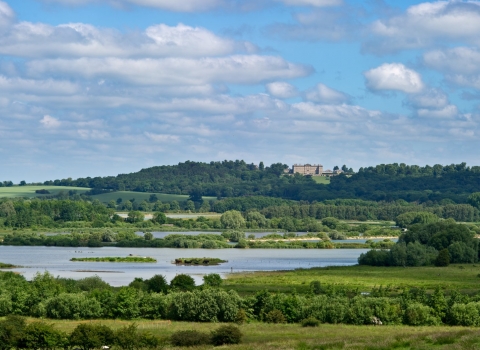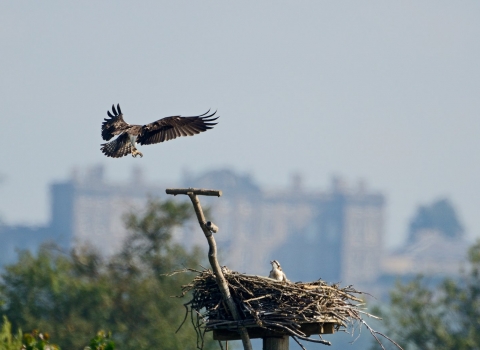Know before you go
Dogs
When to visit
Opening times
Always openBest time to visit
Spring and autumnAbout the reserve
|
Prior’s Coppice is one of the best examples of woodland in the two counties. A walk here will bring you close to some lovely woodland birds, mammals, flowers and trees, and even the possibility of a grass snake! Badger, fox, stoat and muntjac have all been seen here, as well as 71 species of birds – over 40 of which have bred. Nuthatch, blackcap, garden warbler have been joined in the spring by rare visitors, like pied flycatcher and redstart. Some interesting invertebrates have been recorded here, including the very local speckled bush-cricket and the slug Limax cinereoniger. More than 200 species of moth have been recorded, and orange tip and brimstone butterflies are common in spring. Both purple and white-letter hairstreaks can be seen in late spring. So far, 230 species of flowering plants and ferns have been recorded, and there are large colonies of wood anemone, early-purple orchid, wood-sorrel and wood forget-me-not, as well as broad-leaved helleborine, ragged-robin and common spotted-orchid. As well as looking out for wildlife, you can read the trees here much like you can read a history book. You can see the signs of centuries of traditional management, in the form of giant coppice 'stools'. When most native British trees are cut down they do not die, but the stump, or 'stool', throws up numerous poles, which can be harvested every few years. This process, known as coppicing, prolongs the life of some trees, and there are examples in Prior's Coppice with stools 5m across - several hundred years old! Conservation management of the woodland now involves coppicing in some areas, whilst leaving some others to grow wild. The wide rides present in the wood contain wonderful examples of woodland marshy grassland, a distinctive but increasingly rare habitat in our counties. |


